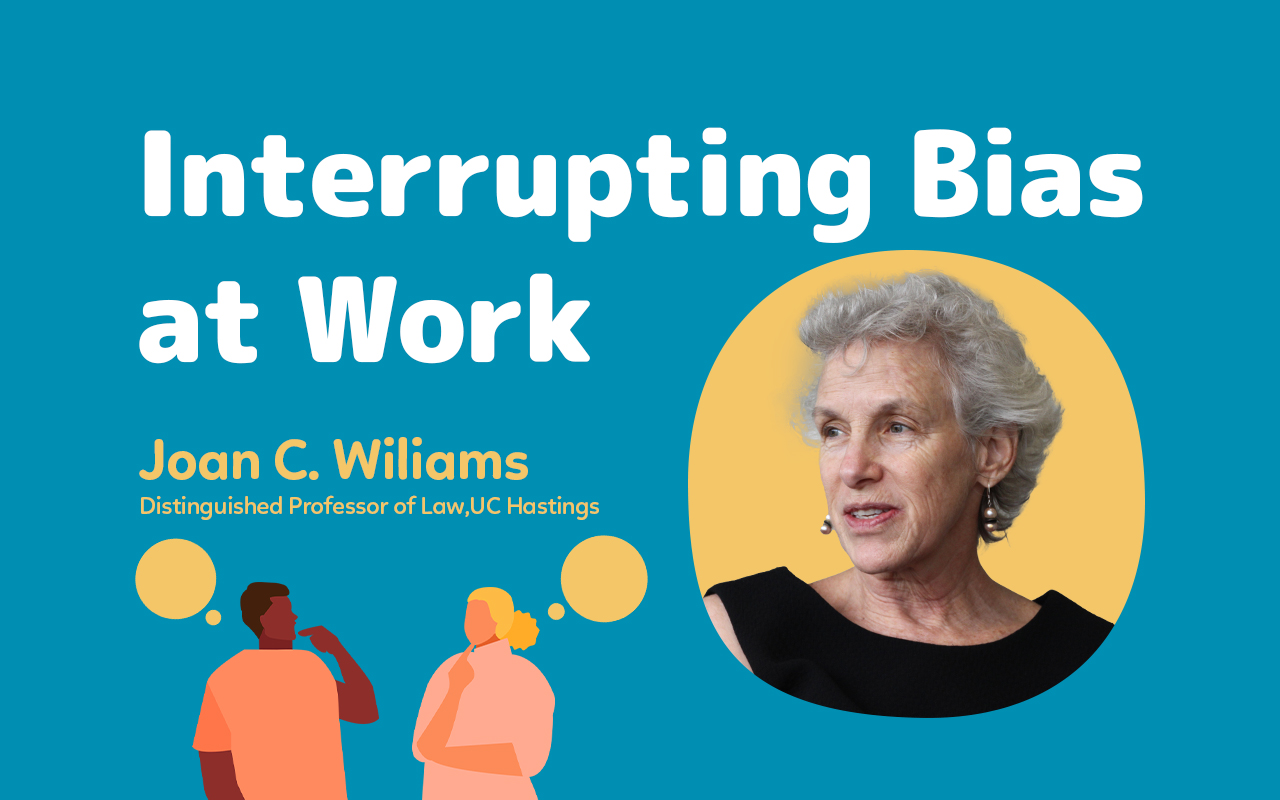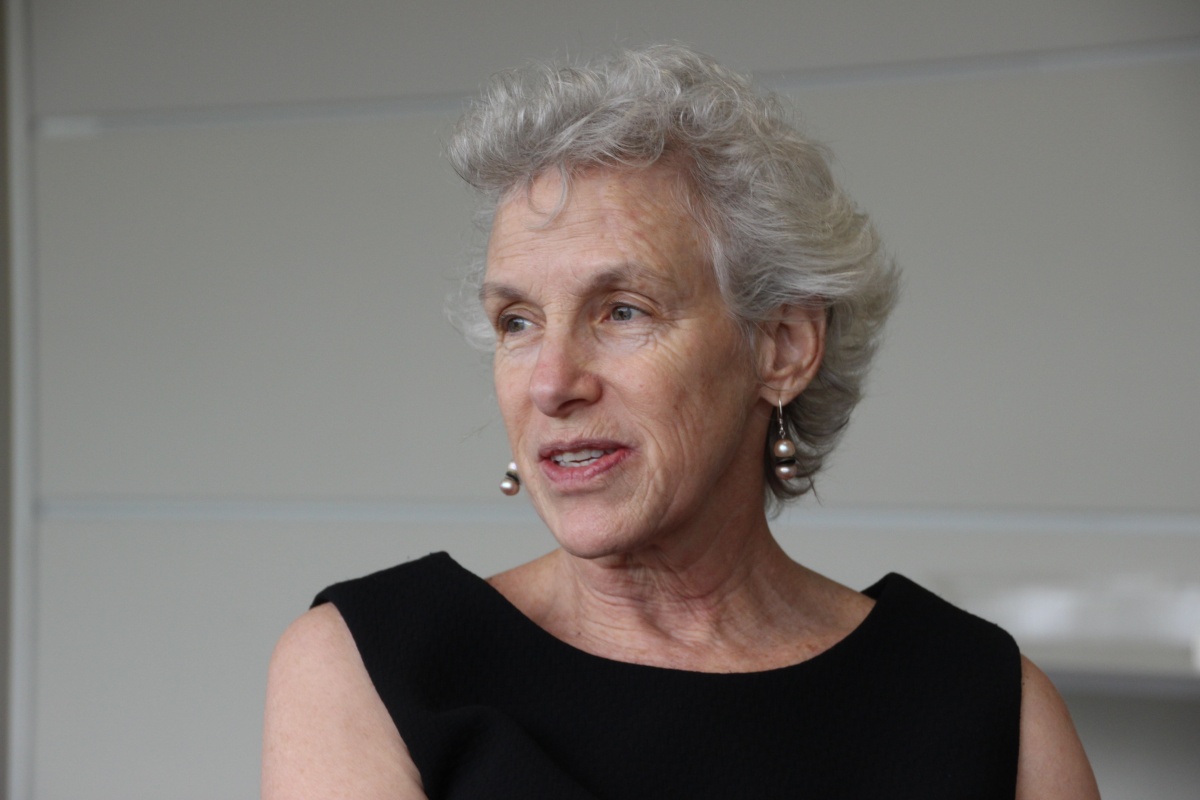Deep Conversations Won't Solve Diversity and Inclusion, but Data and Evidence Can

As the corporate world gradually comes around to the business case for diversity, more resources than ever are being spent on diversity and inclusion programs. We frequently see companies lead large-scale empathetic conversations around stereotypes and unconscious biases. It's hard to deny that as a society, we've gained in collective knowledge.
Yet given the amount of talent and money being thrown at the problem, tangible results are lacking. Women and minorities are still underrepresented in positions of power, underpaid, and undervalued compared to their majority male counterparts. Why are the efforts of some of the world's top companies proving so ineffective?
According to Joan Williams—Founding Director at the Center for WorkLife Law and Distinguished Professor of Law at the University of California, Hastings College of the Law—it's because they're using the wrong approach. While earnest conversations may raise awareness on certain issues, at the end of the day lack of diversity is a problem, and problems are solved with data and metrics.
A more collectively intelligent company
Alex: Before we get into the details of how to promote diversity in the workplace, I'd like to start with a more fundamental question. What are we aiming for? What is the endgame of diversity-promoting measures?
Joan: The endgame is a true meritocracy. My research over the past 15 years has shown that while the majority of workplaces function well as a meritocracy for a certain group of ethnic majority men, they do not function as a meritocracy for any other group.
The easiest way to see this disparity is by looking at the answers to our Workplace Experiences Survey. In the United States, 80-90% of white men say they have fair access to career-enhancing work. Other groups also say yes, but at much lower rates. For instance, only 53% of Black women say yes.
Alex: Should every workplace strive for diversity, or is it a luxury of large workplaces?
Joan: It depends whether you want to be able to tap into the entire labor pool and choose people based on talent, or if you would rather choose employees based on sex or race. If your goal is to select people based on talent, then every workplace has to worry about how they hire and promote people.
Alex: How can an organization know which categories of people are not feeling represented?
Joan: Open your eyes and look at the top ranks of your company! If a certain group is underrepresented, then people from the group are going to feel like they're underrepresented. It's not rocket science.
Alex: In response to that argument, you sometimes hear organizations say they don't look at categories at all. What would you respond to those who say every individual is diverse—that we all have diversity of thought?
Joan: Individuals are indeed all diverse, but what my decades of research have shown is that the individual experience is influenced by social forces. One of those forces is bias.
The single strongest determinant of who is in a person's social network is similarity. If your organization is composed of similar people, you risk having similarity of thought, rather than true diversity of insight and opinion. We can prove this with data. Groups that contain a fair representation of women score way higher in collective intelligence.

Distinguished Professor of Law and Founding Director of the Center for WorkLife Law at the University of California, Hastings College of the Law, Joan C. Williams has been on the forefront of research in gender and racial bias in workplaces for over two decades. Her TED talk, "Why corporate diversity programs fail—and how small tweaks can have a big impact" has been viewed over one million times, and her forthcoming book, Bias Interrupted: Creating Inclusion for Real and for Good, comes out in November 2021.
The same goes for fairer representation of racial or ethnic diversity. Ethnically diverse teams help avoid groupthink and overall work harder than non-diverse teams.
Like attracts like. It's a universal principle, wherever you are in the world. You may say you have diversity of thought, but unless you have diverse representation, you will have lower collective intelligence and poorer business outcomes in the long run.
Alex: What is collective intelligence?
Joan: Collective intelligence measures how well people work together as a team. Research shows that collective intelligence is more than twice as important as individual team member intelligence when it comes to determining team performance. It's also more important than individual intelligence for influencing team satisfaction, cohesion and motivation.
Alex: I see, so collective intelligence is a measure of both team member engagement and productivity.
Joan: Exactly. So remember, when it comes to performance, collective intelligence is literally twice as important as individual intelligence.
Reframing the question
Alex: Earlier you mentioned that individual experience is influenced by social forces. Those forces can be hard to perceive from an individual perspective. Could you give me an example of those forces at play?
Joan: For example, we know that overall, women are more likely than men to be interrupted. Women and people from ethnic minorities also report higher instances of others taking credit for their ideas.
Majority men can behave in more authoritative ways and be seen as hard working or passionate about the business. If a woman were to behave the same way, she might be seen as difficult to work with, or inflexible. Women and minorities have to prove themselves a lot more—navigate more complicated office politics, for example by behaving in ways that are seen as acceptable by majority men.
Alex: How do you know when a certain personality trait is a function of the individual versus the result of a social category? If I have a female colleague who I know has a lot to say but isn't speaking up, should I treat the issue as an individual problem or an environmental one?
Joan: First, you have to reframe the question, because it isn't a problem with her. Rather than saying it's a female colleague who isn't speaking up, say that your environment isn't allowing that female colleague to speak up.
Behavior isn't entirely determined by a person's social category. It's determined by a whole set of things, and social categories are usually part of the whole. Our social category is like the water we swim in.
In your example, that female colleague has to swim through complicated currents of office politics that you're probably not aware of. The first thing to do is understand why she isn't speaking up, and one way of doing that is looking for common patterns of bias. Perhaps when she tries to speak up, she gets interrupted. Maybe her ideas are overlooked until a man repeats them for her. Or she may realize that if she tries to be assertive with her ideas, she is perceived as being difficult to work with, or having a personality problem. All of these are common experiences for women.
Even if she isn't experiencing them in that exact instance, repeated biases may have undermined her confidence. Ethnic minorities and women have to swim against the current, while majority men swim with it. Constantly fighting against the current takes a toll.
Patterns of bias
Alex: You mentioned common patterns of bias. What patterns have you identified?
Joan: Based on my decades of study, I've identified five main patterns of bias. The first is that some groups have to prove themselves over and over again, whereas others are assumed to be competent. I call this first pattern prove it again.
The second is what I call the tightrope. This goes back to what I mentioned earlier about being authoritative. It's easier for majority men to be ambitious, whereas women have to walk this narrow line between being seen as overly masculine and therefore disliked on the one side, and overly feminine and therefore disrespected on the other side. In other words, women more often have to choose between being liked and being respected, whereas it's easier for men to be both.
The third pattern is gender bias triggered by motherhood. Mothers are assumed to be less competent and less committed than women without children. They have to walk a second tightrope where they have to show commitment, but if they are seen as too committed, they'll be perceived as bad mothers.
The fourth pattern is the tug of war. When you have a work environment that's like a boy's club, some women will see that the path of least resistance is to join the club and align against other women. The same thing happens for ethnicity.
The fifth pattern is racial and ethnic stereotypes, which are going to be different for each culture. In the United States for example, Asian Americans are often seen as good at technical work, but not good for leadership.
These are the main patterns, but then there are cultural practices that are inherently biased against certain groups. For example, in Japan there's the nomikai culture, where it's often a requirement for employees to go drinking with the boss after work. For women this is a lose-lose situation, because either they drink as much as the men, which leads to a host of negative perceptions, or they drink less, in which case they're seen as undermining the collegiality of the group. The role of alcohol in business culture is a huge problem for women, and more broadly for anyone who doesn't want to be a hard drinker.
Alex: Armed with these common patterns of bias, what can organizations do to combat the problem?
Joan: Let me start with what not to do. There's this idea that you can solve diversity and inclusion by having deep, earnest conversations. That's not an effective strategy. Even when the conversation is over, bias is still being transmitted every day through your business systems.
For example, we know that majority men have greater access to career-enhancing work than individuals from other groups. Minorities become worker bees given back-office jobs to make majority men look good. If that's your professional environment, you can talk about inclusion until the sun sets, but unless women and ethnic minorities have access to career-enhancing work, they're unlikely to succeed.
Instead, what my research has shown is that you need concrete measures to interrupt bias. I've pinpointed exactly how bias plays out in workplace interactions, business system by business system—from hiring, to performance evaluations, to access to opportunities, to compensation. With those tools in hand, you can use metrics and evidence to interrupt bias.
That's how you achieve any goal in a business setting. Develop metrics so that you can establish baselines, define your goals, and measure your progress toward achieving them.
If your company is having a problem with sales, you don't designate a Celebrate Sales Month. You don't gather people to have a deep and earnest conversation about how much we all value sales. Those kinds of measures don't make sense in a diversity context either.
Try out concrete measures, then use evidence and metrics to evaluate progress until you've achieved your goals.
Getting the tools you need
Alex: If an organization wants to get started interrupting bias, what's the first thing they should do?
Joan: Once they understand the patterns, it's a matter of going through their business systems and taking concrete measures to interrupt bias. Which measures you should take depends a lot on your circumstances, so I would recommend going to the bias interrupters website. There, we have open-source tool kits for a broad spectrum of business systems and real-life situations, like performance evaluations, access to opportunities, work-life issues, and even COVID response. These tools have already been accessed over 225,000 times by companies around the world.
I also have a book coming up that will introduce people to specific patterns of bias, with chapters on what different people within the organization can do, from the CEO to individual managers. Companies in the US spend around $8 billion a year on diversity and inclusion, but most don't have a clue what they're doing.
Alex: Can you give me a concrete example of the type of tools people can use to interrupt bias?
Joan: Sure. A good example is the two-page document we have summarizing how bias typically plays out in performance evaluations. We gave this two-pager to a company to read out loud and in the next evaluation, we found that women and ethnic minorities got higher evaluations and more promotions. Reading the whole thing took less than 10 minutes!
Sometimes all it takes is that concrete understanding of how bias plays out. Then, with the same tools and metrics they would use to improve any other aspect of their business, companies can have a real tangible impact on improving diversity and inclusion.
Written by Alex Steullet. Edited by Ade Lee and Mina Samejima. Visual by Dan Takahashi. Photograph courtesy of Joan Williams.
Writer

Alex Steullet
Alex is the editor in chief of Kintopia and part of the corporate branding department at Cybozu. He holds an LLM in Human Rights Law from the University of Nottingham and previously worked for the Swiss government.
Photographer
Editor

Dan Takahashi
Dan is an editor and photographer for Kintopia's Japanese twin website Cybozu-shiki. He is the most recent member to join the corporate branding department at Cybozu.




